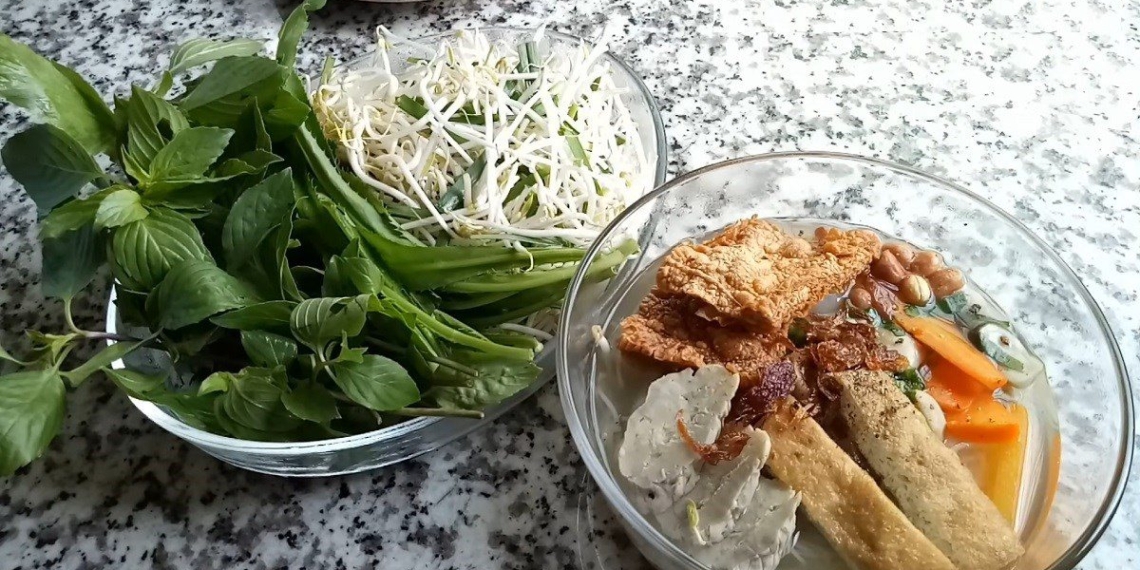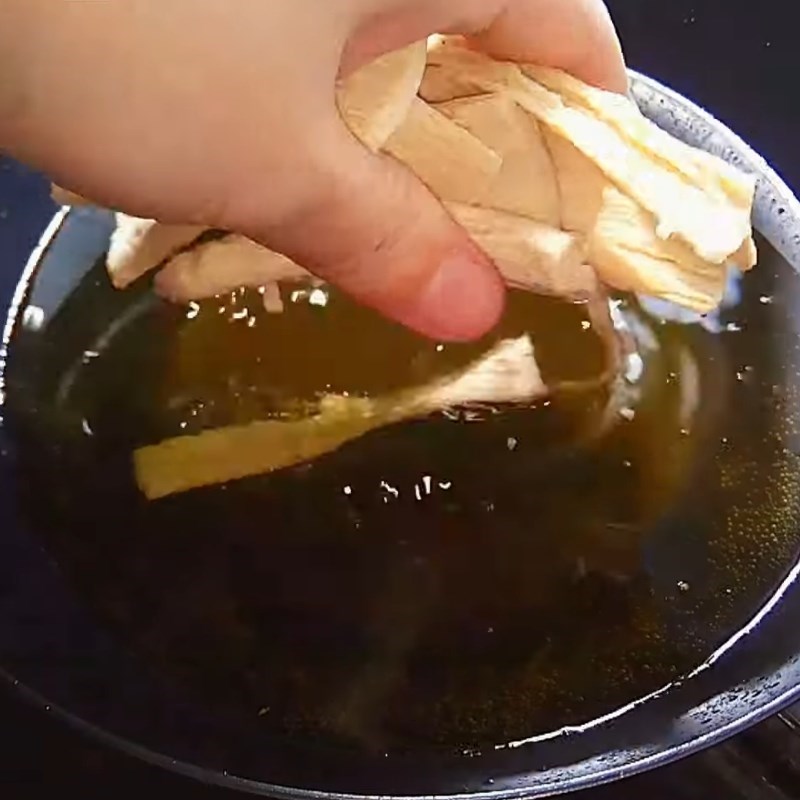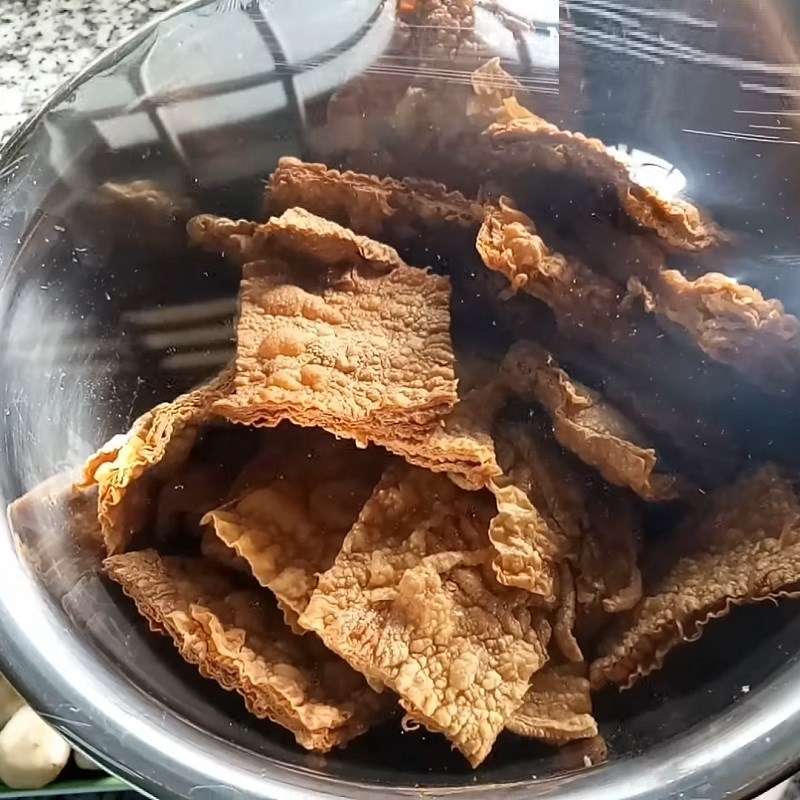-
Preparation
20 minutes
-
Cooking
45 minutes
-
Difficulty
Easy
If you are looking for something new in your family’s daily meals during vegetarian occasions. Then let’s get cooking with TasteVN to make delicious and unique Western-style vegetarian noodles and show off your skills in making vegetarian dishes right away!
Ingredients for Western-style Vegetarian Noodles For 5 people
Dried noodle strands 500 gr Straw mushrooms 300 gr Loofah 2 pieces Cassava 2 pieces White radish 2 pieces Carrot 1 piece Pickled radish 1/2 piece (xá bấu) Bean curd skin 200 gr Vegetarian sausage 1 stick (about 200gr) Tofu 2 pieces Bean sprouts 100 gr Chives 10 stalks Culantro 5 stalks Basil a little Roasted peanuts 100 gr Rock sugar 3 tablespoons Cooking oil 5 tablespoons Vegetarian seasoning 1 tablespoon Common spices a little (salt/ monosodium glutamate/ ground pepper)
How to choose fresh ingredients
How to choose fresh straw mushrooms
- Good straw mushrooms are those that are still in bud form, round or cylindrical in shape, and feel slightly firm when squeezed, indicating they will taste better.
- Choose mushrooms that are uniform in size for a more visually appealing and tastier dish.
- You should prioritize buying straw mushrooms that are black or gray in color, as they will taste better than the white ones.
- Do not choose if the mushrooms have a foul smell, are discolored, feel soft and mushy to the touch, or if they are overly large, as these indicate they have been stored too long and will not taste good.
How to choose fresh loofah
- You should choose loofah fruits that feel heavy in hand, have a dark green skin, and emit a natural fragrance when smelled.
- Prioritize buying elongated, proportionate fruits; it’s better to choose small or medium-sized ones, as they are younger and will taste better.
- Avoid buying fruits that are too old, have many black spots on the surface, and are scratched or rotten.
How to choose fresh and delicious cassava
- To select good cassava roots, you should choose those with light brown skin and a weight that corresponds to the size of the root.
- Additionally, cassava roots with smaller stalks will have more flesh, less fiber, and will taste sweeter and better.
- Do not choose large roots that feel light because these roots have usually been in the ground for a long time, and the moisture in the root has evaporated significantly, making them not sweet and tasty.
- Moreover, you should avoid selecting cassava roots that are bruised, have a dull color, dark yellow, or have black spots on the outside. These roots may be infested or spoiled on the inside, even if the outer skin looks relatively normal.
How to choose fresh and delicious carrots
- Fresh and delicious carrots will have a deep orange color, bright and firm green leaves tightly attached to the body.
- You should choose carrots that feel firm when pressed with your hand. The shape of the root should be straight and elongated towards the tail.
- Do not choose carrots with wilted, bruised tops, damaged bodies, slimy parts, or any dark spots.
How to choose and where to buy vegetarian sausage
- You should buy vegetarian sausage at reputable places such as supermarkets or markets to ensure the quality and origin of the product.
- For packaged products, you should carefully check the expiration date, ensure the outer packaging is intact, not torn or discolored, and that the product inside is not moldy.
- You can also make vegetarian sausage at home using the recipe below from TasteVN.
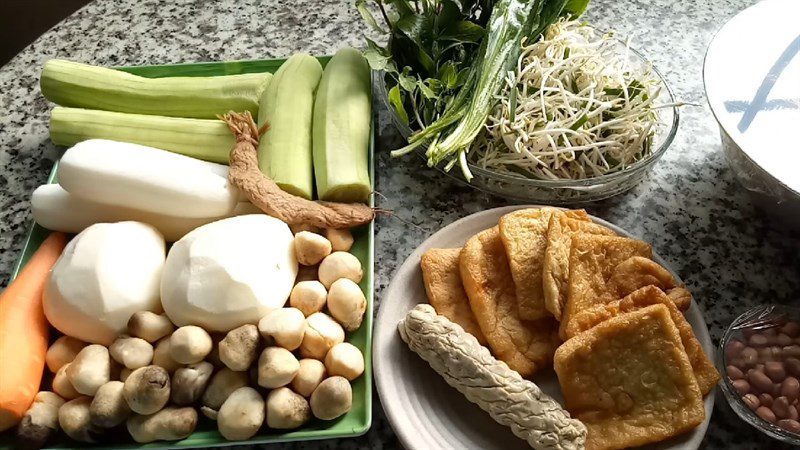
How to prepare Vegetarian Hu Tieu from the Mekong Delta
-
Prepare the vegetables
Peel the loofah, wash it clean, drain, and then cut it in half.
Peel the white radish, carrot, and cassava, wash them clean, and cut them into pieces about 1/3 of a finger thick.
Cut off the stems of straw mushrooms, wash them clean, and cut them in half. Wash the bean sprouts and chives clean and drain. Remove the roots of the coriander, wash it clean, and chop it small. Remove the old leaves of the basil, wash it clean, and drain.
Cut the tofu and vegetarian sausage into bite-sized pieces about 2 finger lengths.


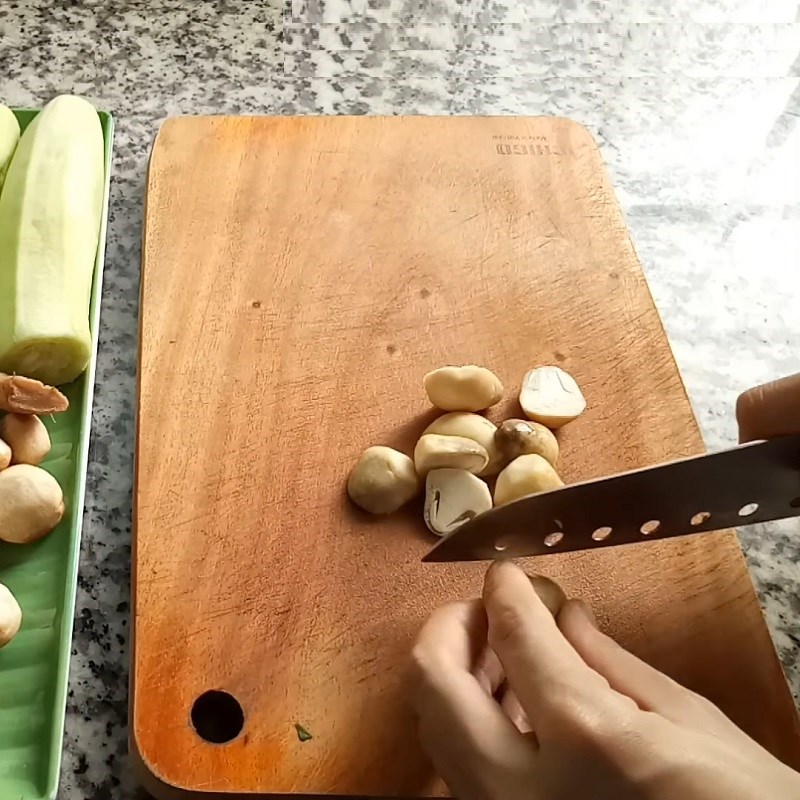
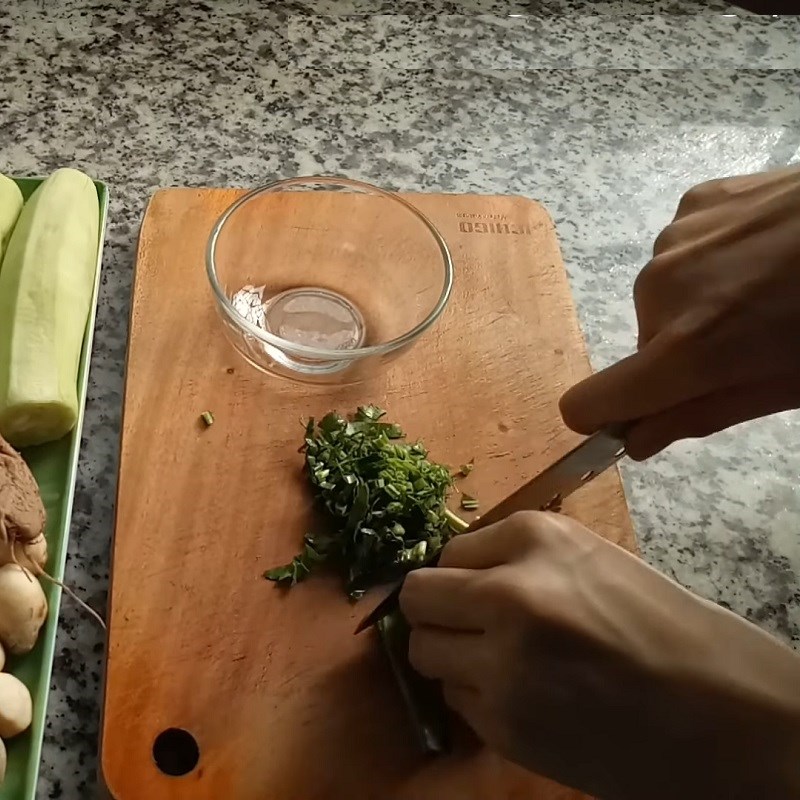
-
Making the broth
Place a pot on the stove, turn the heat to high, add 3.5 liters of water and bring to a boil. When the water boils, add 1/2 a salted radish, yam, white radish, and carrot, lower the heat, and simmer for about 10 minutes.
Next, add the loofah and straw mushrooms and simmer for another 20 – 25 minutes.
Season with 1 tablespoon of salt, 1/2 tablespoon of monosodium glutamate, 3 tablespoons of rock sugar, and 1 tablespoon of vegetarian seasoning.
Wait for the water to boil again, taste and adjust the seasoning, add cilantro and a bit of pepper to the pot, then turn off the heat.
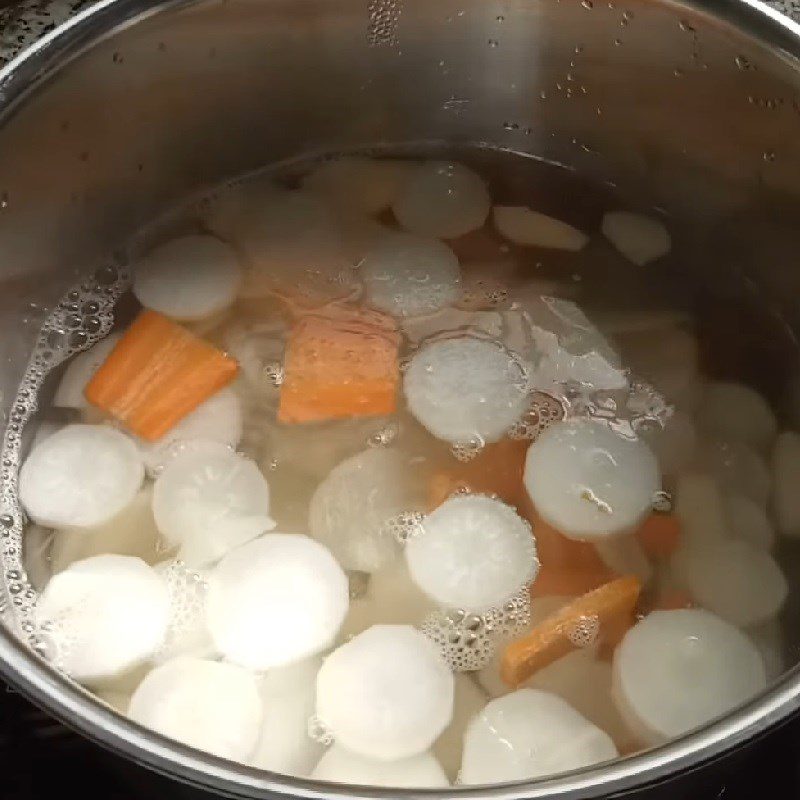
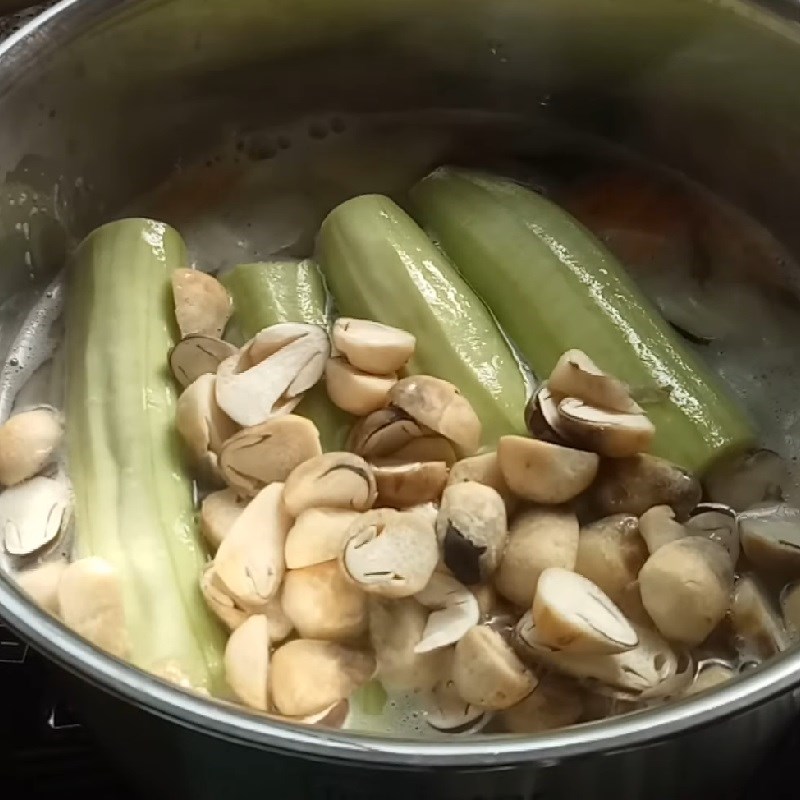
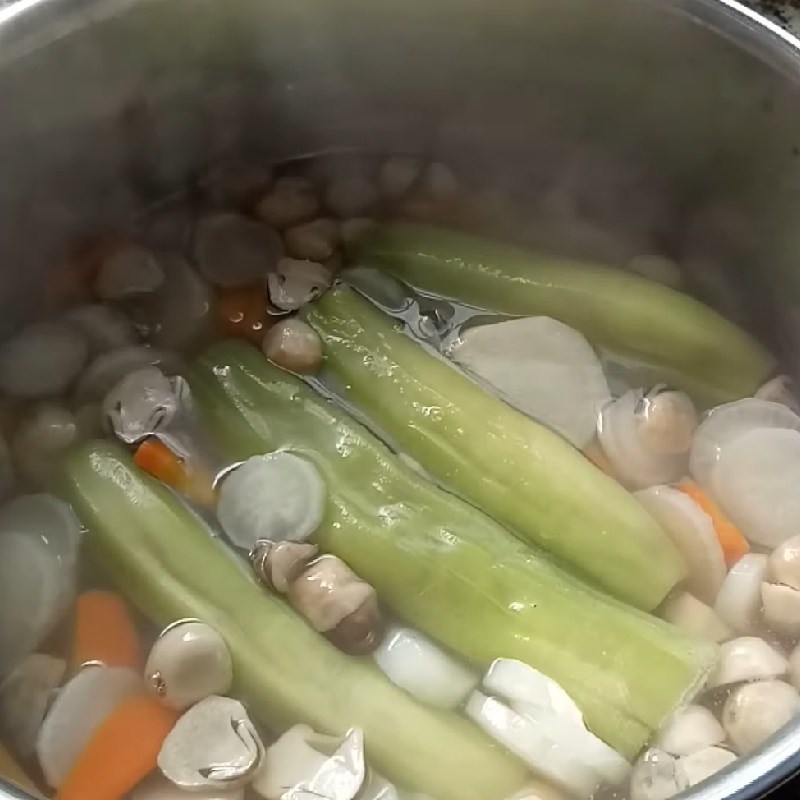
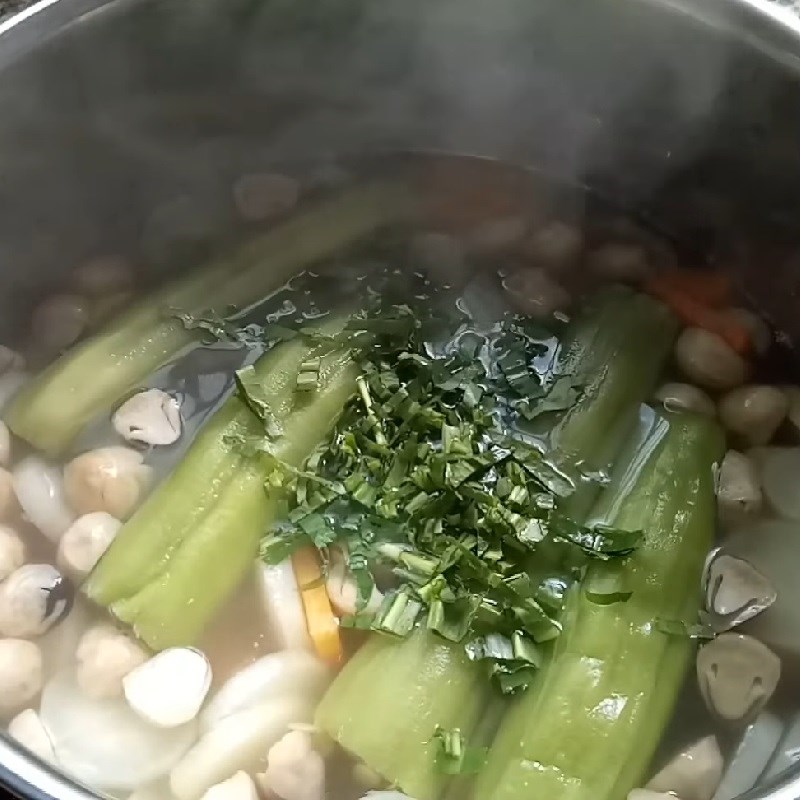
-
Blanching Hu Tieu and bean sprouts
Place a pot on the stove, turn the heat to high, add 2 liters of water and bring to a boil. When the water boils, add the bean sprouts and blanch for about 20 seconds, then remove and drain.
Next, add the Hu Tieu noodles and blanch for about 1 minute, then remove and drain.
How to blanch Hu Tieu to be chewy and not mushy
- First, you should separate the Hu Tieu into loose strands. If the noodles are too long, you can cut them to about 20 – 30cm for easier eating.
- You can soak the Hu Tieu in cold water to soften it quickly. Do not soak for too long to avoid mushiness.
- After blanching, place the Hu Tieu in a bowl of cold water, wait for it to cool, then take it out. Doing this will make the Hu Tieu crispy and not mushy.
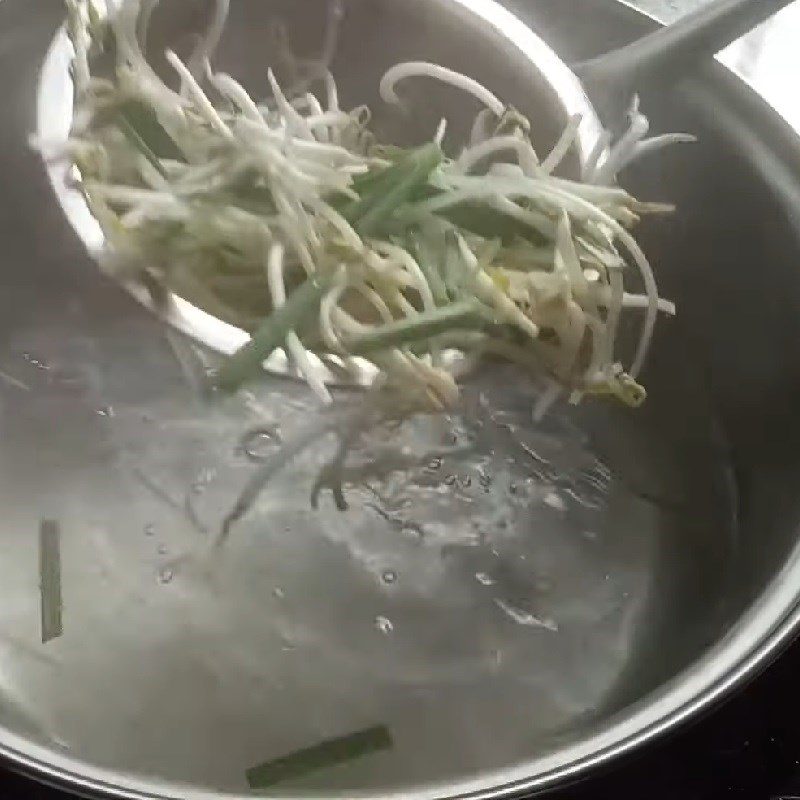
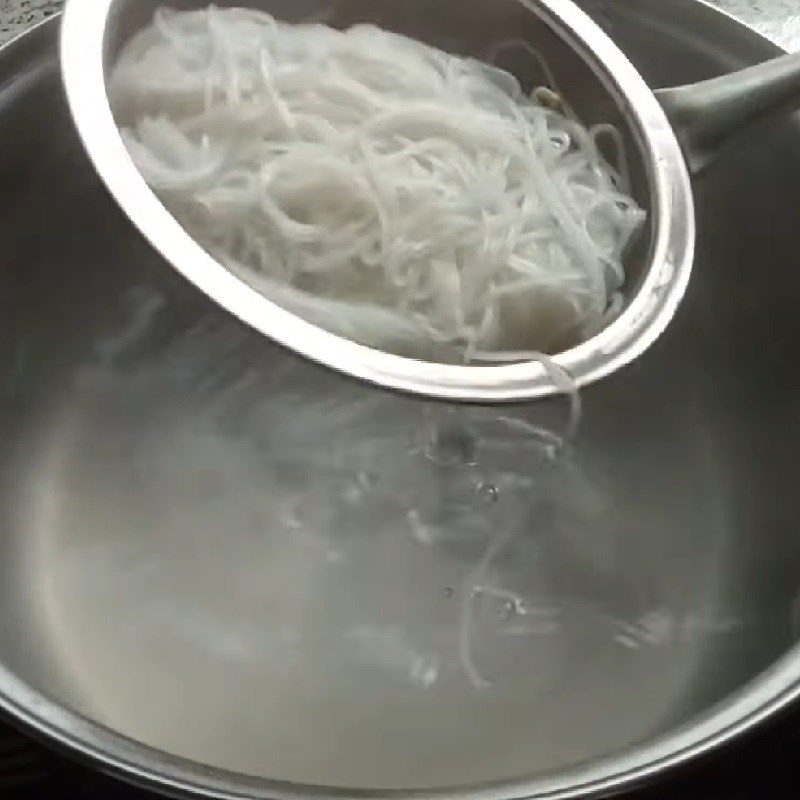
-
Final product
Vegetarian rice noodles from the Mekong Delta when completed will have an attractive aroma and a very eye-catching appearance, with a broth that is sweet and clear from vegetables combined with soft and chewy rice noodles.
When eating, you add the rice noodles into a bowl, pour in more broth, add fried tofu skin, tofu, vegetarian sausage, roasted peanuts, and then enjoy with chives and basil, dipping into a bowl of spicy sauce to enhance the flavor!

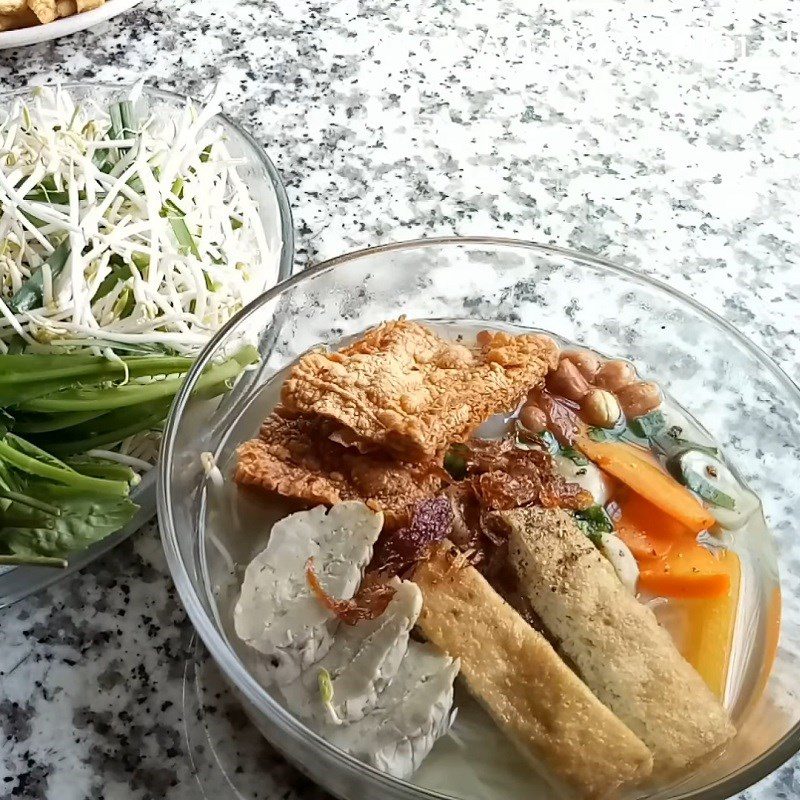
It’s really simple to make vegetarian Hu Tieu from the Mekong Delta at home, right? Let’s refresh the family menu on rice days. Wishing you success!
